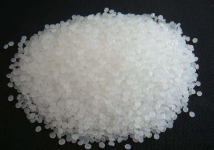read: 804 time:2025-07-14 19:50:44 from:化易天下
Isopropanol, also known as isopropyl alcohol, plays a crucial role in DNA extraction processes, particularly in the precipitation step. Understanding why we use isopropanol in DNA extraction requires a deep dive into its chemical properties and the overall mechanism of DNA precipitation. This article will explore these aspects in detail, offering a thorough explanation suitable for those looking to optimize their DNA extraction protocols.
DNA extraction involves several key steps, including cell lysis, protein denaturation, and DNA precipitation. The precipitation step is crucial because it allows for the separation of DNA from the rest of the cellular components. Precipitation relies on reducing the solubility of DNA, causing it to form a visible pellet that can be collected for further analysis. Here, the choice of solvent—whether ethanol or isopropanol—is vital to the efficiency and purity of the DNA extraction process.
Isopropanol is a polar solvent with a lower dielectric constant than water, which makes it less capable of stabilizing charged molecules like DNA in solution. When added to an aqueous solution containing DNA, isopropanol reduces the solubility of DNA, promoting its aggregation into a pellet form. Compared to ethanol, another commonly used alcohol in DNA extraction, isopropanol requires less volume to precipitate the same amount of DNA. Typically, isopropanol is used at a 1:1 ratio with the aqueous phase, while ethanol usually requires a 2:1 ratio.
One of the primary reasons why we use isopropanol in DNA extraction is its ability to precipitate DNA more efficiently, even in smaller volumes. Isopropanol allows for faster DNA precipitation, often requiring less incubation time and lower centrifuge speeds. This efficiency is particularly beneficial when working with large sample volumes or when time is a critical factor. Moreover, isopropanol is more effective at precipitating DNA at room temperature, unlike ethanol, which generally requires lower temperatures for optimal performance.
Another important reason for using isopropanol in DNA extraction is its impact on the purity of the DNA pellet. Isopropanol tends to co-precipitate less salt compared to ethanol, resulting in a purer DNA sample. This is crucial for downstream applications like PCR, where contaminants can inhibit enzyme activity or interfere with accurate measurements. Therefore, using isopropanol can lead to higher quality DNA suitable for sensitive analytical procedures.
While isopropanol offers several advantages, there are also practical considerations to keep in mind. One potential downside is that DNA pellets formed with isopropanol can be less visible and more prone to adhering to the walls of tubes, making them harder to see and manipulate. Additionally, isopropanol has a higher viscosity than ethanol, which can make the washing steps more challenging. However, these issues are generally manageable with proper technique and do not outweigh the benefits of using isopropanol in DNA extraction.
In summary, the reasons why we use isopropanol in DNA extraction are largely due to its ability to efficiently precipitate DNA, enhance purity, and reduce the overall time required for the extraction process. Its chemical properties make it particularly effective at isolating DNA in a quick and reliable manner, which is why it is a preferred solvent in many laboratories. Understanding these benefits allows researchers to optimize their protocols and achieve better results in their DNA extraction endeavors.

Jincheng Petrochemical's 300000 ton polypropylene plant successfully trial production, 2024 polypropylene market analysis

The ABS market remains sluggish, what is the future direction?

Market differentiation of bisphenol A intensifies: prices rise in East China, while prices generally decline in other regions

The production method and process flow of silicone acrylic lotion, and what are the common raw materials